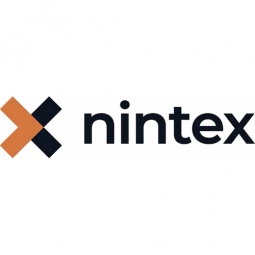Technology Category
- Application Infrastructure & Middleware - Event-Driven Application
- Functional Applications - Enterprise Resource Planning Systems (ERP)
Applicable Industries
- Education
- Paper & Pulp
Use Cases
- Leasing Finance Automation
- Material Handling Automation
Services
- System Integration
About The Customer
Fulton County Schools is one of the oldest and largest school districts in the state of Georgia, United States. Founded in 1871, it serves approximately 96,700 students across 105 schools and employs more than 14,000 full-and part-time staff. The school system offers a variety of programs, including the STEAM program, which groups Science, Technology, Engineering, Arts, and Mathematics curriculum together. Parents must apply for their children to be part of this program, which has only one teacher per grade level. The school system was seeking a way to streamline its operations and make its processes more efficient, particularly the application process for its STEAM program.
The Challenge
Fulton County School System, one of the oldest and largest school districts in Georgia, was facing a significant challenge in streamlining its operations. With over 14,000 full-and part-time employees and approximately 96,700 students across 105 schools, the school system was struggling with inefficient processes, particularly in the application process for its STEAM program. The application process was paper-based, which was not only time-consuming but also prone to errors and miscommunications. Parents had to fill out a two-page paper form and return it to the program coordinator, who then had to manually review all applications and individually contact parents regarding their child's acceptance status. This process was particularly burdensome for the program coordinator, who also held a full-time position as the school's assistant principal. Each year, more than 200 applications were submitted, and the review, approval, and parent correspondence were all managed manually.
The Solution
To address these challenges, Fulton County Schools turned to Nintex, a process automation solution. Using Nintex Workflows and Nintex Forms, the school system was able to digitize the entire STEAM program application process. The paper form application was transformed into an anonymous online form that parents could complete. Once the form was submitted, a workflow was initiated, notifying the program coordinator and adding the application to a SharePoint list where every step in the process was tracked. The program coordinator could then approve or decline the application from the list and automatically notify parents of their child's acceptance status. This solution not only eliminated the need for paper forms but also provided better visibility and tracking into the application status. Furthermore, the solution was scalable and could be easily tweaked and expanded to other schools with a STEAM program within the Fulton County School System.
Operational Impact
Quantitative Benefit

Case Study missing?
Start adding your own!
Register with your work email and create a new case study profile for your business.
Related Case Studies.

Case Study
Wireless Improves Efficiency in Compressed Air Systems
Hollingsworth and Vose wanted to improve the efficiency of their compressed air system, lower the electricity expense component of manufacturing cost in their commodity industry, and conserve energy leading to lowered greenhouse gas emissions. Compressed air systems degrade over time and become leaky and inefficient. Hollingsworth and Vose wanted to increase the frequency of system inspections without paying the high cost of manual labor.

Case Study
Process Predictive Analysis in Pulp and Paper Mill
Common paper breaks consequently lead up to 60 minutes of downtime, delaying a potential $10K per hour of production value process. Thus, defective products cause financial and damage company's reputation. Improving quality and reducing defect rates can generate millions of dollars of revenue per year for your company.

Case Study
Revolutionizing Medical Training in India: GSL Smart Lab and the LAP Mentor
The GSL SMART Lab, a collective effort of the GSL College of Medicine and the GSL College of Nursing and Health Science, was facing a challenge in providing superior training to healthcare professionals. As clinical medicine was becoming more focused on patient safety and quality of care, the need for medical simulation to bridge the educational gap between the classroom and the clinical environment was becoming increasingly apparent. Dr. Sandeep Ganni, the director of the GSL SMART Lab, envisioned a world-class surgical and medical training center where physicians and healthcare professionals could learn skills through simulation training. He was looking for different simulators for different specialties to provide both basic and advanced simulation training. For laparoscopic surgery, he was interested in a high fidelity simulator that could provide basic surgical and suturing skills training for international accreditation as well as specific hands-on training in complex laparoscopic procedures for practicing physicians in India.

Case Study
IoT platform Enables Safety Solutions for U.S. School Districts
Designed to alert drivers when schoolchildren are present, especially in low-visibility conditions, school-zone flasher signals are typically updated manually at each school. The switching is based on the school calendar and manually changed when an unexpected early dismissal occurs, as in the case of a weather-event altering the normal schedule. The process to reprogram the flashers requires a significant effort by school district personnel to implement due to the large number of warning flashers installed across an entire school district.

Case Study
Industrial Video Monitoring for Security and Regulatory Compliance
Because of the Stevenson mill’s proximity to the Tennessee River, WestRock was required by the USCG to comply with the Maritime Security 33CFR (MARSEC) regulations. WestRock needed a video security system but wanted to add other applications not required by the government, such as video process monitoring, condition monitoring, and wireless network management. WestRock needed a reliable video solution to avoid the compliance fines and possible security risks – but the solution needed to be implemented in the most cost-effective manner possible.








